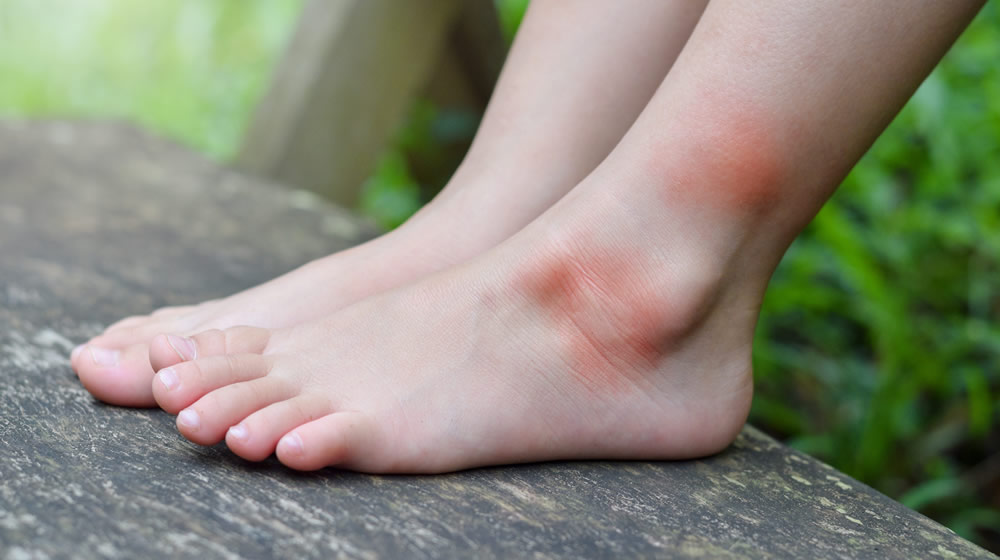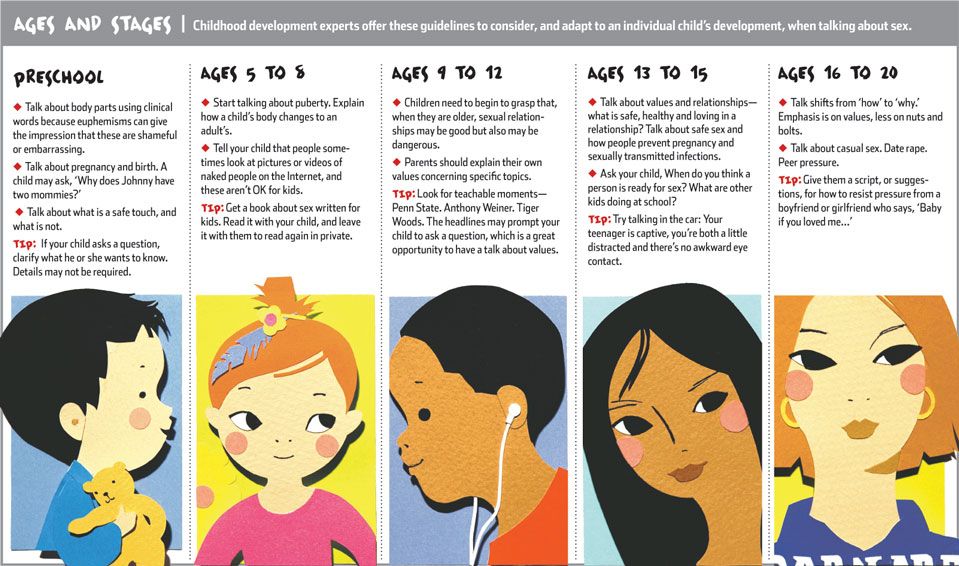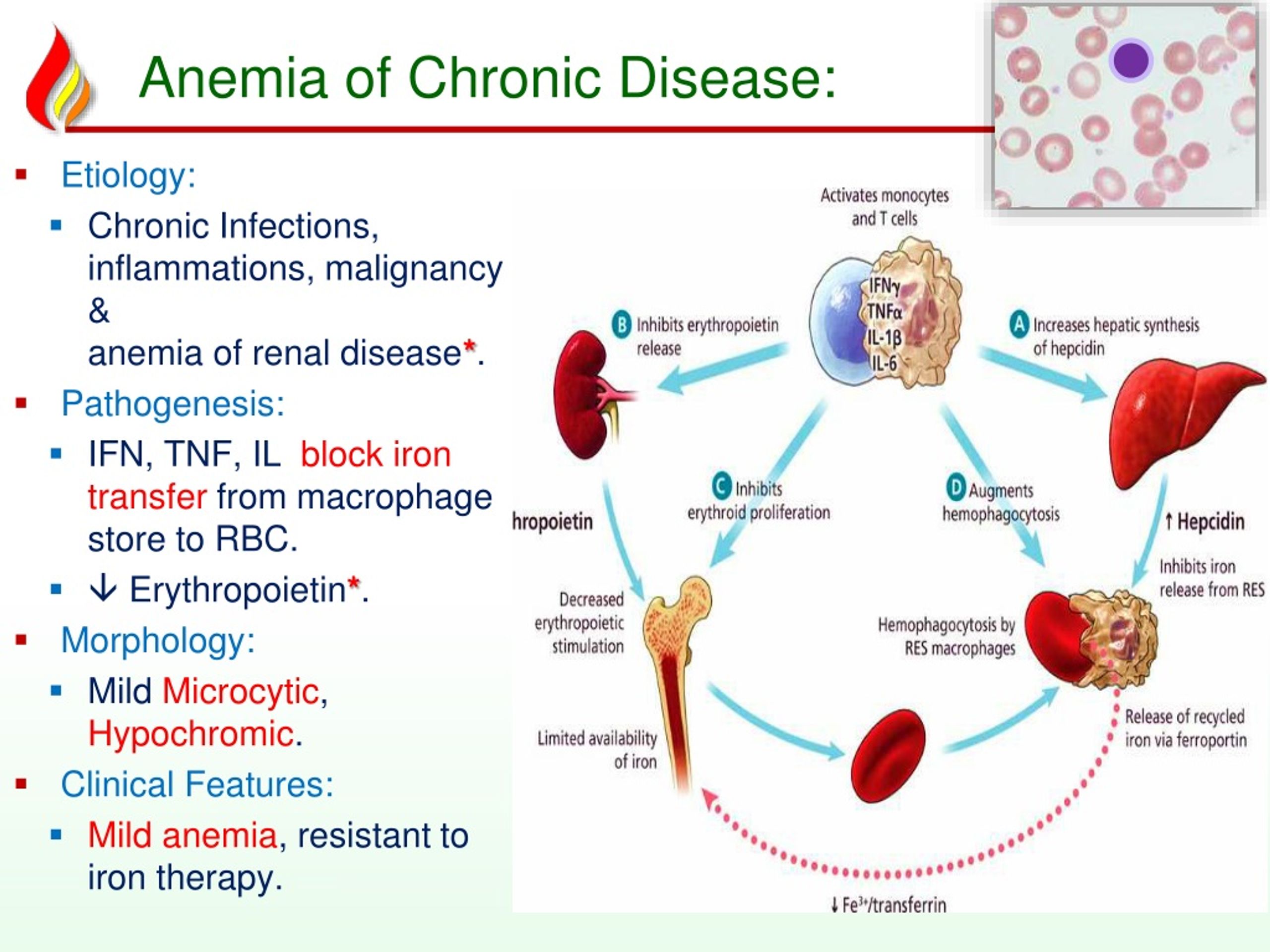What weeks are 6 months pregnant
6 Months Pregnant: Symptoms and Fetal Development
At six months pregnant, you’re nearing the end of your second trimester. You might be feeling pretty energized and excited about your baby's arrival in a few months, even if you're dealing with common pregnancy symptoms like heartburn, hot flashes, and backaches. Inside your belly, your baby is making great strides in development this month, as his lungs and sucking reflex are nearly ready for when he makes his grand entrance! Want to learn more about what’s to come this month? Read on!
Common Pregnancy Symptoms at 6 Months Pregnant
At six months pregnant, you might experience some of these common pregnancy symptoms, but likely not all of them:
Heartburn. Those pesky pregnancy hormones are at it again, this time relaxing the valve between your stomach and esophagus. This allows stomach acids to leak into the esophagus, causing that uncomfortable burning sensation.
If you’re bothered by heartburn, try eating about six smaller meals each day (rather than three larger meals), and try to avoid foods that seem to make it worse, such as spicy or fried dishes, citrus, and chocolate.
Backaches. When you are six months pregnant and your belly continues to grow, the extra weight gain begins to place more strain on your back muscles, and can cause lower back pain. A warm bath can be soothing, and if the pain persists, speak to your healthcare provider about safe pain medications you can take.
Hot flashes. If you thought hot flashes were only a sign of menopause, think again! It’s not uncommon for moms-to-be (who are burning more calories and generating more heat) to experience this symptom occasionally. If hot flashes are making you uncomfortable and sweaty, stay hydrated, wear loose-fitting clothing, and consider using a portable fan at home and at work.
Dizziness. At six months pregnant, as your belly grows, your circulation is changing, and there may be less blood flow to your upper body and head.
 If you feel lightheaded, move slowly when changing positions, drink plenty of water, and avoid standing for long periods of time.
If you feel lightheaded, move slowly when changing positions, drink plenty of water, and avoid standing for long periods of time. Leg cramps. Some moms-to-be get cramping in their lower legs, particularly at night time. The jury is still out on what exactly causes these cramps, but regular exercise, staying hydrated, and massaging the calf muscles before bed can sometimes help prevent them. If a cramp does strike, try stretching the muscle, taking a warm bath, or applying an ice pack to the affected area.
Fast heartbeat. The thought of meeting your little one might make your heart beat a little more quickly than usual, but did you know that an increased heart rate can be normal during pregnancy? Your heart is working extra hard to pump up to 50 percent more blood around your body now. If you notice that your heart rate stays elevated for long stretches, or if you also have difficulty breathing, speak to your healthcare provider.
How Is Your Baby Developing This Month?
Your baby’s eyelids are still shut, but those little eyeballs are moving behind the lids.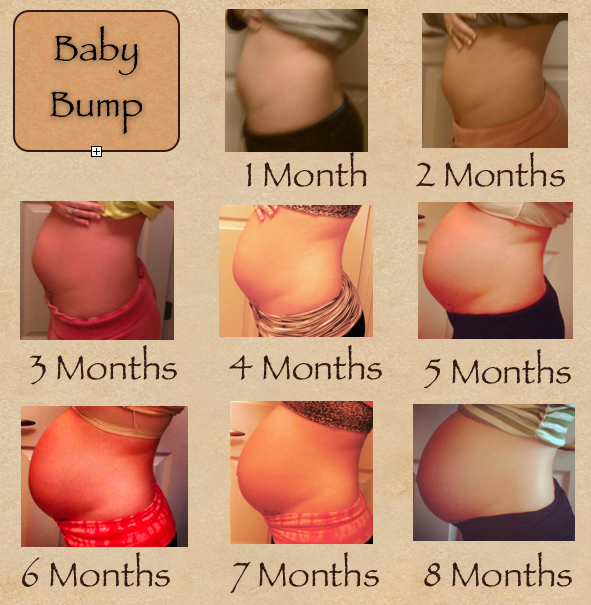 When he's not asleep, your baby might also respond to loud noises or your voice by moving in response.
By this month, your little one’s lungs are completely formed. Of course, there’s still a way to go before they’re ready to function in the outside world. Your baby’s sucking reflex is improving, and he might be looking for his thumb right now while you’re reading this article.
Aside from vital organs and internal systems, your baby has also developed something else that’s very important when you’re about six months pregnant — his very own fingerprints and toe prints. He may have gotten his genes from mom and dad, but these prints are all his!
When he's not asleep, your baby might also respond to loud noises or your voice by moving in response.
By this month, your little one’s lungs are completely formed. Of course, there’s still a way to go before they’re ready to function in the outside world. Your baby’s sucking reflex is improving, and he might be looking for his thumb right now while you’re reading this article.
Aside from vital organs and internal systems, your baby has also developed something else that’s very important when you’re about six months pregnant — his very own fingerprints and toe prints. He may have gotten his genes from mom and dad, but these prints are all his!
How Big Is Your Baby When You’re 6 Months Pregnant?
Wondering about your baby’s size when you’re six months pregnant? He could weigh more than 1 pound and be almost 12 inches long around this time.
Related pregnancy tool
Fill out your details:
Pre-pregnancy weight (lbs.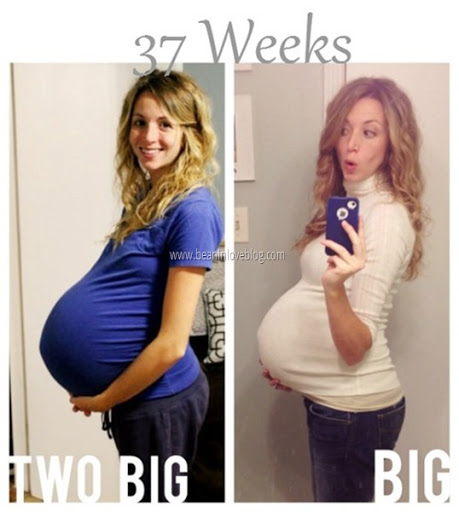 )
)
This is a mandatory field.
Height (ft.)
This is a mandatory field.
Height (in.)
Current week of pregnancy (1 to 40)
This is a mandatory field.
Tick the box
I'm expecting twins
What Does a Fetus Look Like at 6 Months?
Check out these illustrations for a glimpse at what your baby might look like when you’re six months pregnant:
6 Months Pregnant: Your Body’s Changes
What does six months pregnant look like? It’s different for every mom-to-be, but by this month, you may have gained somewhere between 10 to 15 pounds.
Your changing body and your weight gain at six months pregnant may affect how you feel about how you look from day to day.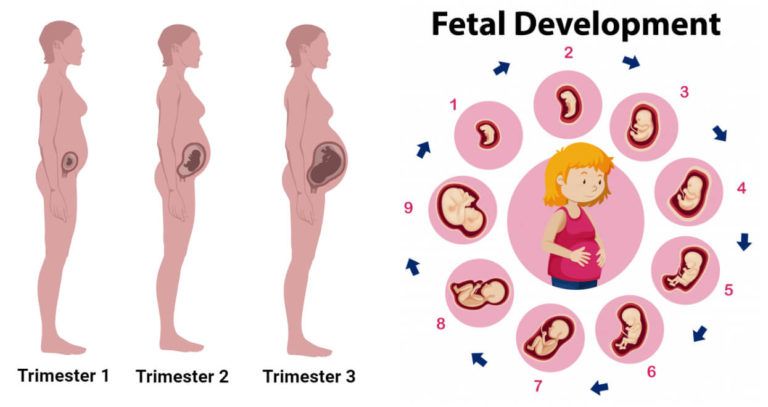 Some moms-to-be love their pregnancy bodies, and that’s great! For other women, it’s perfectly normal to go back and forth between feeling more or less comfortable with their appearance each day.
Your body is doing an amazing job right now, so try to remember to give it (and yourself) the love you both deserve. Moderate exercise and a healthy diet can help you feel your best. These strategies can also ensure you have the strength you’ll need for labor and delivery.
As your belly grows and your center of gravity changes, certain activities, like your usual exercise routine or even sleeping, can become a little more difficult at six months pregnant. Another one of these activities is sex.
If you and your partner feel like having sex, great! If you don’t, that’s OK too. For more on this topic, check out this article on sex during pregnancy.
Some moms-to-be love their pregnancy bodies, and that’s great! For other women, it’s perfectly normal to go back and forth between feeling more or less comfortable with their appearance each day.
Your body is doing an amazing job right now, so try to remember to give it (and yourself) the love you both deserve. Moderate exercise and a healthy diet can help you feel your best. These strategies can also ensure you have the strength you’ll need for labor and delivery.
As your belly grows and your center of gravity changes, certain activities, like your usual exercise routine or even sleeping, can become a little more difficult at six months pregnant. Another one of these activities is sex.
If you and your partner feel like having sex, great! If you don’t, that’s OK too. For more on this topic, check out this article on sex during pregnancy.
How Far Along Are You at 6 Months Pregnant?
At six months pregnant, you’re finishing up the second trimester, and you might be wondering just how many weeks six months pregnant is. The answer can be confusing because there are several different ways the weeks of pregnancy can be split into months.
It turns out that six months pregnant could start at week 21, 22, or 23 and extend through week 24 to week 27 or 28.
The answer can be confusing because there are several different ways the weeks of pregnancy can be split into months.
It turns out that six months pregnant could start at week 21, 22, or 23 and extend through week 24 to week 27 or 28.
Checklist for When You’re 6 Months Pregnant
If you’re experiencing “momnesia” (i.e. forgetfulness, absentmindedness, having trouble concentrating, and general spaciness) read up on what may be behind “pregnancy brain” and what you can do about it.
As your bump grows and your pregnancy progresses you may have some questions about how sex during pregnancy is different. Speak to your healthcare provider about any specific questions you have and keep the lines of communication open with your partner.
Start finalizing your baby registry list as your baby shower might be just around the corner. Your shower host will need the registry details before sending out the invitations, so ask her when she needs your finished registry list by.
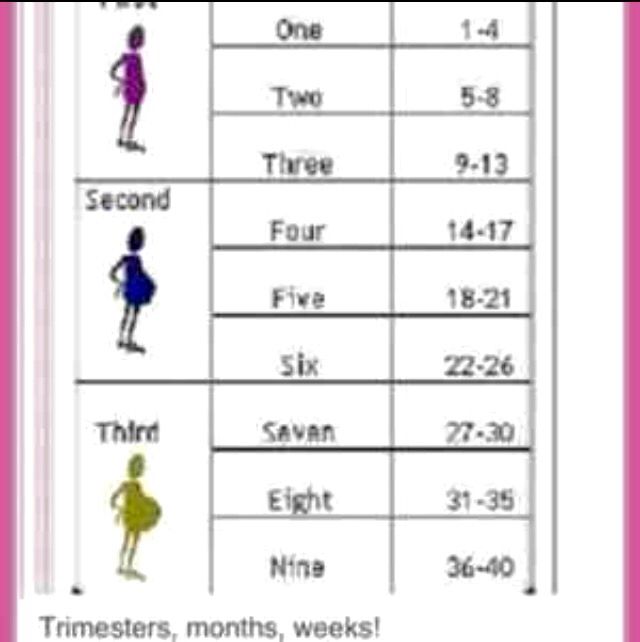
If you’re starting to shop for baby gear, check out the best baby products as voted by Pampers Parents. We surveyed thousands of Pampers Parents to find out which specific items they love and recommend, and we reviewed all their favorite items so you can make the right choice for you and your little one.
There’s still time to plan a babymoon. Have some fun with our quiz to determine your ideal babymoon destination.
Keep searching for the perfect baby name using our Baby Name Generator.
Download the Pampers Club app to earn gifts and savings on all those baby essentials you’ll need for your little one.
Sign up for even more weekly pregnancy tips here:
Calendar of pregnancy | Elite Private Clinic
Calendar of pregnancy | Elite Private Clinic backET RU EN LV LT SE FIN
Ask time for visit- The first month (weeks 0- 4)
- The second month (weeks 5-8)
- The third month (weeks 9-12)
- The fourth month (weeks 13-16)
- The fifth month (weeks 17- 20)
- The sixth month (weeks 21-24)
- The seventh month (weeks 25-28)
- The eighth month (weeks 29-32)
- The ninth month (weeks 33-36)
- The tenth month (weeks 37-40)
The first month (weeks 0- 4)
-begins on the day you started your last period and lasts 4 weeks.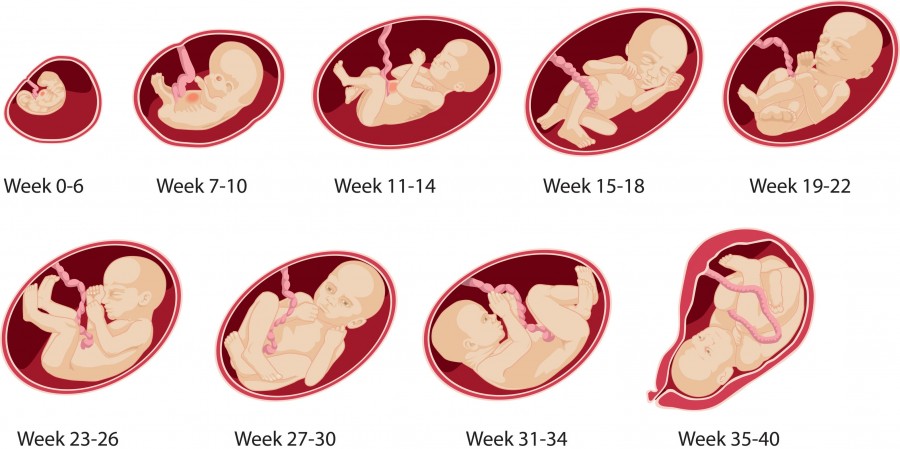
- Conception takes place about two weeks from the start of your period – the baby’s life begins.
- At the end of the month there are still 36 weeks until the birth (8 months, 12 days).
- At the end of the month the fetus is 2 weeks old.
- The fetus is now the size of a pinhead.
REMEMBER: While you are pregnant, do not take any medicines without first checking that they are safe for you and your baby. Consult your doctor or the health nurse first.
The second month (weeks 5-8)
-begins 4 weeks after the start of your last period.
- Lasts 4 weeks.
- At the end of the month there are still 32 weeks until the birth (7 months, 14 days)
- At the beginning of the month the fetus is 2 weeks old and at the end of the month 6 weeks old.
- The fetus is about 1,5 cm long at the end of the month.
- The fetus has got the beginnings of arms and legs.
- The heart, nose, ears and eyelids, the nervous system, spine and umbilical cord are beginning to develop.
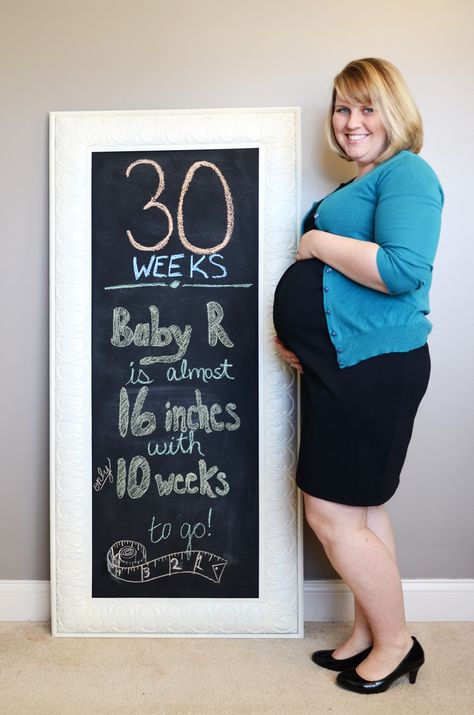
REMEMBER: Heavy smoking and drinking during pregnancy can harm your baby!
The third month (weeks 9-12)
-begins 8 weeks after the start of your last period.
- At the end of the month there are still 28 weeks until the birth (6 months, 16 days)
- At the beginning of the month the fetus is 6 weeks old and at the end of the month 10 weeks old.
- The fetus is about 9 cm long at the end of the month and weights about 20 grams.
- The baby’s heart beats for the first time.
- The fetus floats in a sack of amniotic fluid and gets its food via the umbilical chord.
REMEMBER: The mother’s welfare is important to the child: healthy food and plenty of exercise are good for both.
The fourth month (weeks 13-16)
-begins 12 weeks after the start of your last period.
- At the end of the month there are still 24 weeks until the birth (5 months, 18 days).
- At the beginning of the month the fetus is 10 weeks old and at the end of the month 14 weeks old.

- The fetus is about 16 cm long at the end of the month and weights about 100 grams.
- The uterus is about the size of a fist.
- The head is big, about half the total length, and the face is beginning to acquire its own features. The ears and genitals are developing.
- The fetus practises breathing and swallowing movements. It kicks, moves its toes and thumbs and turns its head. The mother does not yet feel these tiny movements, however.
REMEMBER: In order to qualify for maternity benefit you must visit the clinic or a doctor before the end of the 16th week.
The fifth month(weeks 17- 20)
-begins 16 weeks after the start of your last period.
- At the end of the month there are still 20 weeks until the birth (4 months, 20 days)
- At the beginning of the month the fetus is 14 weeks old and at the end of the month 18 weeks old.
- The fetus is 25-27 cm long at the end of the month and weighs 250-300 grams.
- The fetus has its own circulatory system and its heart beats twice as fast as an adults.

- The foetus’s skin is covered in fine, downy hair (lanugo), which vanishes by the time the baby is born. It now has eyebrows.
- At this stage the placenta is almost as big as the fetus. It protects the fetus from some but not all harmful substances.
- The mother can now feel the baby’s movements if she has had a baby before.
REMEMBER: Now’s the time to talk to the health nurse about antenatal classes.
The sixth month (weeks 21-24)
-begins 20 weeks after the start of your last period.
- At the end of the month there are still 16 weeks until the birth (3 months, 2 days).
- At the beginning of the month the fetus is 18 weeks old and at the end of the month, 22 weeks old.
- The fetus is about 30cm long at the end of the month and weighs 400-600 grams. Even a primapara (a women expecting her first baby) can feel its movements. Its heartbeats can be heard.
- By the end of the month the top of the uterus (the fundus) is up to the navel.
 Faster growth is a sign of twins.
Faster growth is a sign of twins. - The fetus practises sucking and its thumb often find its way into its mouth. Its hair and nails grow. The protective film begins to develop into skin.
- The fetus sleeps most of the time but may be woken by external noises or vibration.
REMEMBER: In week 22 you can apply for your maternity, paternity or parents’ pay (and leave of absence) as well as for maternity benefit.
The seventh month (weeks 25-28)
-begins 24 weeks after the start of your last period.
- At the end of the month there are still 12 weeks until the birth (2 months, 24 days).
- At the beginning of the month the fetus is 22 weeks old and at the end of the month 26 weeks old.
- The fetus is about 35 cm long and weighs about a kilo.
- The fetus moves a lot, turns and visibly kicks. It opens and closes its eyes, and it has a strong grip with its hands.
- The uterus is up to the navel. You may feel the first contractions, during which your tummy goes hard for a few seconds.

The eighth month (weeks 29-32)
-begins 28 weeks after the start of your last period.
- At the end of the month there are still 8 weeks until the birth (1 month, 26 days).
- At the beginning of the month the fetus is 26 weeks old and at the end of the month 30 weeks old.
- The fetus is about 40cm long and weighs about 1,5 kilos
- The fetus is really beginning to look like a baby, though a very frail one. If it were born now it would have chances of surviving.
- The foetus’s lungs and other organs are not yet fully developed, however, and it does not yet have all the antibodies of a full-term baby.
REMEMBER: Avoid standing, lifting heavy objects and other strenuous jobs.
The ninth month (weeks 33-36)
-begins 32 weeks after the start of your last period
- At the end of the month there are still 28 days until the birth, i.e. 4 weeks.
- At the beginning of the month the baby is 30 weeks old and at the end of the month 34 weeks old.
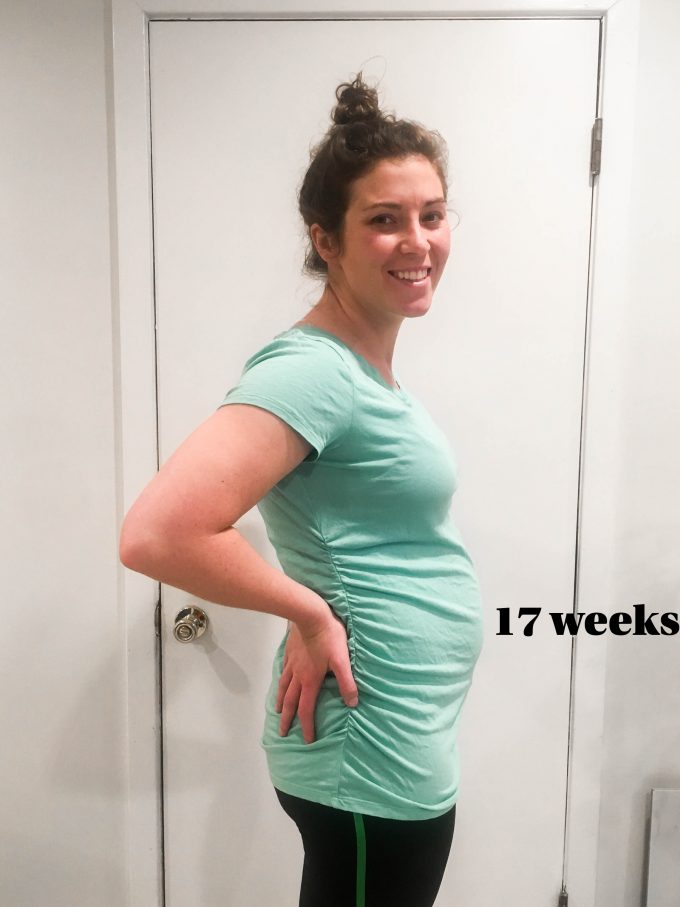
- The baby is about 47 cm long and weighs about 2, 700 grams. It quickly gains weight.
- The baby moves less than before, because it has not much room left to move in. At this stage most babies get into position for birth, head down.
- The baby’s skin is covered with a creamy film called vernix.
REMEMBER: It’s a good idea to get everything ready for the baby at this stage.
The tenth month (weeks 37-40)
-begins 36 weeks after the start of your last period or 34 weeks after conception.
- At the beginning of the month the baby is 34 weeks old; most babies are born when they are 38 weeks old.
- The uterus drops and the baby’s head engages ready for birth. The contractions increase, considerably.
- The baby kicks so hard in the uterus that it can push away a book placed on the mother’s tummy.
- At birth most babies are 49-52 cm long and weigh 3,000-4, 000 grams
- Your baby is born at the end of the tenth month, give or take a week.
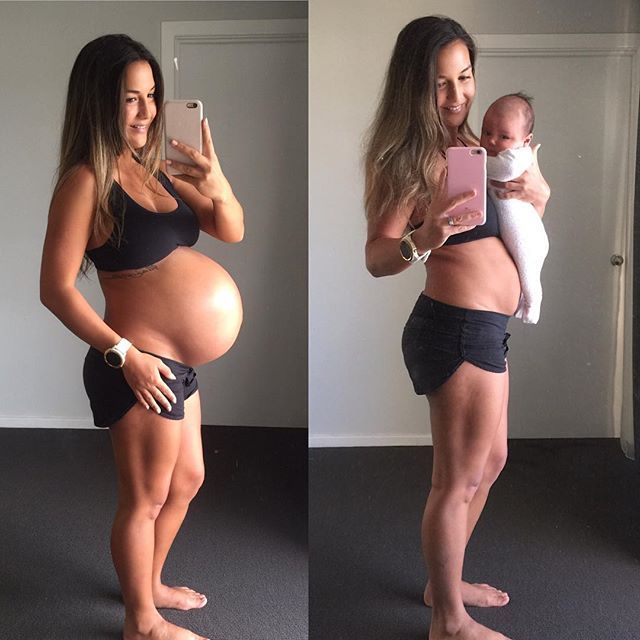
REMEMBER: Set off for the hospital immediately the waters break, if you have pain or bleeding, or when the contractions are coming regularly (see the chapter on the birth).
which week begins, fetal development and abdomen at 6 months of pregnancy | MUSTELA
From which week the sixth month of pregnancy begins
From the 22nd week the sixth month of pregnancy begins. It includes 4 weeks and several days, so the 6th month and the second trimester ends at the 26th week. This time is considered the most calm. The mother's condition has stabilized, the risk of sudden miscarriage or fading of pregnancy has passed, and the stomach is not yet so large and heavy. nine0005 It's time to enjoy this state and listen to the baby's frequent movements.
Signs, symptoms and sensations
What does the expectant mother feel at the 6th month:
- The center of gravity changes, the pregnant woman feels her body in a new way.
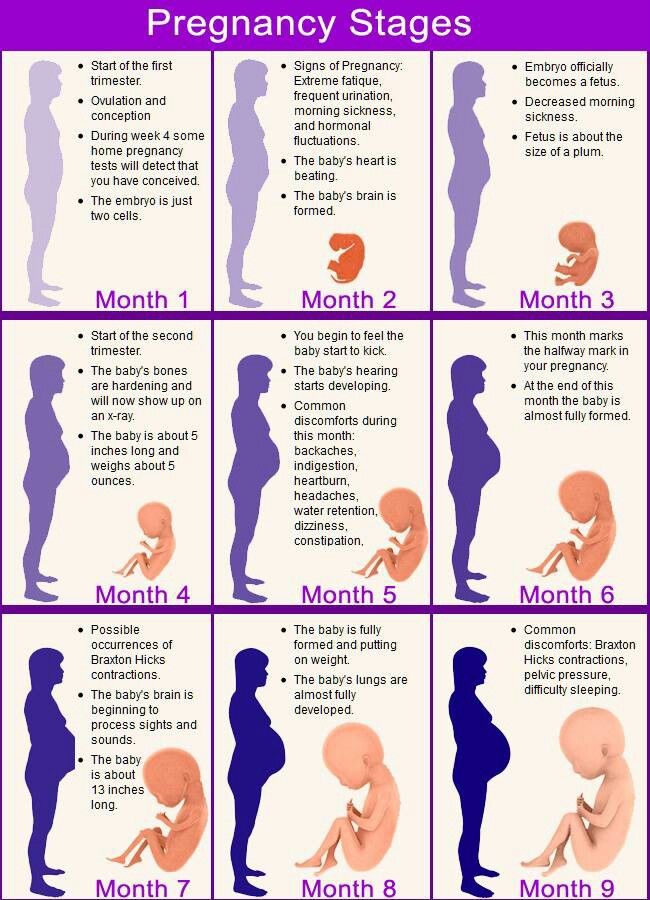 There is a feeling of stiffness in movements and sluggishness, it becomes more difficult to bend over, fasten shoes. The back gets tired more and more, back pain is no longer uncommon.
There is a feeling of stiffness in movements and sluggishness, it becomes more difficult to bend over, fasten shoes. The back gets tired more and more, back pain is no longer uncommon. - Changes in metabolism, digestion. nine0006 Intestinal motility slows down, food is more difficult to digest, constipation occurs. This is influenced by the hormonal background, the muscles relax and stretch. After eating, heartburn often occurs, this is due to the pressure of the uterus on the stomach.
- You may feel that your foot has become a size larger. This is due not only to swelling in the ankle area, but also to the relaxation of the muscles and ligaments that hold the bones of the foot.
- The mucous membranes of the nose, mouth and eyes become dry. There may be discomfort in the eyes, it is more difficult to breathe through the nose, at night the mucous membrane dries up. Moisturizing the room, using moisturizing drops in the nose and eyes, and drinking frequently will help to cope with the condition.
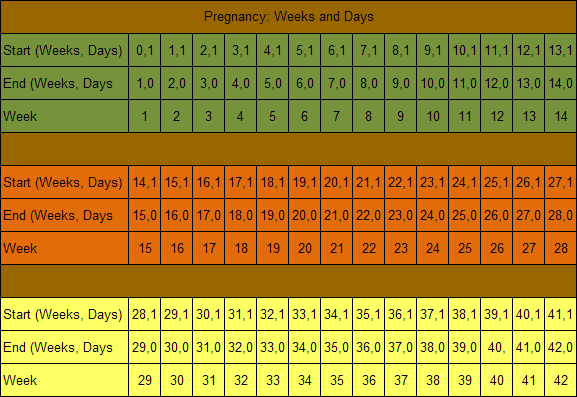 nine0020
nine0020 - The uterus grows rapidly and puts more and more pressure on the bladder, which increases the urge to go to the toilet.
- It's getting harder and harder to find a comfortable sleeping position. You can lie only on your side, preferably on the left.
- The skin in the abdomen, sides and chest stretches more and more, it may itch.
- Exacerbation of hemorrhoids.
- Periodic weakness and mood swings. Symptoms are associated with a decrease in hemoglobin, and mood changes due to hormonal changes.
- Vaginal discharge, clear or white, odorless. nine0020
- There may be swelling in the hands and feet due to fluid retention in the body, swelling is aggravated by eating salty foods.
- Palpitations due to physical exertion. If the condition does not improve after rest, you need to see a doctor and monitor blood pressure.
- Stable weight gain - at least 250 g per week.
- Veins or capillaries on the legs become more visible.

Shocks and movements of the fetus are well felt. nine0006 The expectant mother is already accustomed to the sleep and wakefulness of the baby, his movements become more predictable. He sleeps more and more with his mother's physical activity, and during rest or at night, on the contrary, he pushes and rolls over. At 6 months, the baby still has enough space in the uterus, it easily rotates in it.
Belly at 6 months of pregnancy
By this time, the pregnant woman has already gained about 6 kg in weight. The abdomen becomes expressive, more rounded. Its height is about 24 - 26 cm, it is 5 - 6 cm above the navel. The circumference of the abdomen for each woman is different, as it depends on the complexion and how many kilograms she has added during this time. nine0061 Pregnant women may develop or noticeably increase stretch marks due to stretching of the skin in places that become larger in volume. By the 6th month, the belly grows faster, and changes in the figure are noticeable every week.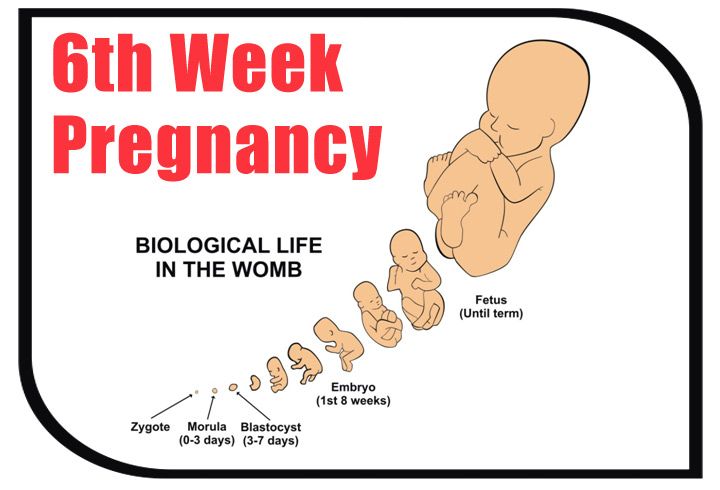
To reduce the strain on your lower back due to your ever-growing belly, wear a prenatal bandage in the form of a belt or underwear.
The belt supports the stomach from below, which makes walking much easier. While sitting, the bandage can press from below, so it is better to unfasten or remove it. With an increased tone of the uterus, wearing a belt is contraindicated. nine0061 During the entire period of pregnancy, light physical activity is recommended - gymnastics for pregnant women, warm-up, yoga. All movements should be smooth and measured, without unnecessary and abrupt movements, you can not lift weights. Strength training is not recommended, especially for those who did not do it before pregnancy.
Training contractions in the sixth month are not uncommon
(also called Braxton-Hicks contractions). May occur irregularly and last up to 30 seconds and up to 4 times per hour. Such false contractions do not mean that it's time to give birth, it's just training the body for the upcoming birth. Unlike real contractions, they are irregular and painless. nine0061 During training bouts, the stomach becomes stone, often this condition is painful. You need to sit down (or lie down) and relax, do not engage in physical activity. False contractions often provoke physical overwork or dehydration. It is better for the expectant mother to drink water and calm down. If the contractions become regular, and the spasm is accompanied by pain, consult a doctor.
Unlike real contractions, they are irregular and painless. nine0061 During training bouts, the stomach becomes stone, often this condition is painful. You need to sit down (or lie down) and relax, do not engage in physical activity. False contractions often provoke physical overwork or dehydration. It is better for the expectant mother to drink water and calm down. If the contractions become regular, and the spasm is accompanied by pain, consult a doctor.
Mother's weight during pregnancy
At the 6th month of pregnancy, weight gain is 250 - 300 g per week. By the end of the month and the second trimester, the total weight gain is already 5-6 kg. nine0009
What determines weight gain :
- BMI and pre-pregnancy weight;
- number of fruits;
- volume of amniotic fluid;
- power mode.
The total weight that the expectant mother gains during pregnancy includes the weight of the fetus, amniotic fluid, the volume of her own blood and adipose tissue increasing during this time.
In case of oligohydramnios, the weight of a pregnant woman may increase slowly, and in case of polyhydramnios it may exceed the norm of 300 g per week. nine0061 It is recommended to measure the weight and volume of the abdomen every week and during the appointment with the gynecologist. If the indicators are more than normal, the doctor will suggest reconsidering the diet.
Pregnancy stretch marks
At 6 months, the skin may feel very tight or stretch marks may be noticeable, especially on the sides, abdomen, chest. Stretch marks can also occur on the thighs and buttocks when their volume increases during pregnancy.
What can help with stretch marks:
- regular light exercise to keep skin and muscles toned ;
- stretch mark cosmetics - such as our unscented stretch mark cream or stretch mark oil - to moisturize and nourish areas where the skin is most stretched;
- contrast shower;
- Gently massage the belly and sides with moisturizers to help relieve itching.
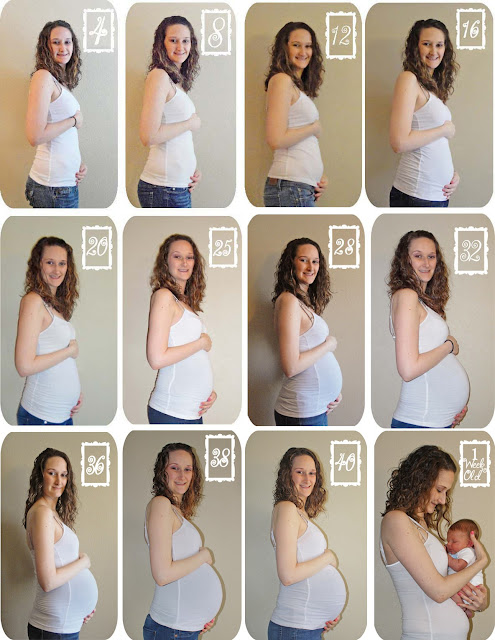 nine0053
nine0053 - Dimensions of the fetus: height at 22 weeks is about 26 cm and weight 350 - 400 g, at 26 weeks the height is 34 cm and weight is about 800 g. The proportions of the baby's body are already correct, he looks like a newborn.
- The skin is still pink and wrinkled, fatty tissue is just beginning to grow, the body is covered with lanugo down. Head hair, eyelashes and eyebrows appear. On ultrasound, you can see facial features and facial expressions, the baby can already frown or smile.

- Hearing is well developed, the child listens to sounds from outside and reacts to them with kicks. The lungs develop and secrete a pulmonary sulfactant that will prevent the alvioli from sticking together during the first breath at birth. The sweat glands began to function. nine0020
- The brain is developing rapidly, and the taste buds are already tuned - the baby feels and distinguishes the taste of the amniotic fluid when swallowed, which changes depending on what the mother ate. The capillary system begins to develop.
- At the end of the second trimester at 26 weeks, the baby opens his eyes, distinguishes between light and dark.
- the volume of the head and abdomen, they measure the length of the fetus, hips, the results are compared with the norm at this time; nine0020
- fetal heart rate and viability, activity;
- the fetus is examined visually for proportions and the presence of obvious deviations from the norm at its term;
- measure the length of the nasal bone and the width of the collar fold, compare the data with the analysis of screening for the detection of chromosomal pathologies - Down syndrome, Patau, Edwards.
- B vitamins - brown rice, lentils, bread. Improve bowel function and reduce anxiety.
- Calcium - milk, fermented milk products.
 Important for strong teeth, bones of mother and fetus. nine0020
Important for strong teeth, bones of mother and fetus. nine0020 - Fiber and vitamin C - vegetables and fruits. They are needed for the normal functioning of the digestive tract and resistance to viruses.
- Vitamin E - vegetable oil and nuts. They will help strengthen blood vessels and normalize blood viscosity.
- Meat, eggs and fish. Include them in your diet to maintain strength, increase hemoglobin and nourish the brain.
- First month of pregnancy (weeks 0-4)
- Second month of pregnancy (weeks 5-8)
- Third month of pregnancy (weeks 9-12)
- Fourth month of pregnancy (weeks 13-16)
- Fifth month of pregnancy (weeks 17-20)
- Sixth month of pregnancy (weeks 21-24)
- Seventh month of pregnancy (weeks 25 -28)
- Eighth month of pregnancy (weeks 29-32)
- Ninth month of pregnancy (weeks 33-36)
- Tenth month of pregnancy (weeks 37-40)
Pay attention to the ingredients. It is recommended to give preference to creams and oils for stretch marks for pregnant women, which contain natural ingredients and do not contain fragrances and additional harmful substances.
It is recommended to start using the products from the first month of pregnancy, continuing until the very birth.
How the fetus develops
At the 6th month of pregnancy, the internal organs of the fetus are already formed, tissues and body systems are developing :
During the 6th month, the progress of the fetus is especially noticeable. At this time, he doubles his weight and height, actively moves and practices future breathing by swallowing amniotic fluid into the lungs. nine0009
Ultrasound at the sixth month of pregnancy (description and photo)
At the 6th month, the gynecologist prescribes the 2nd screening.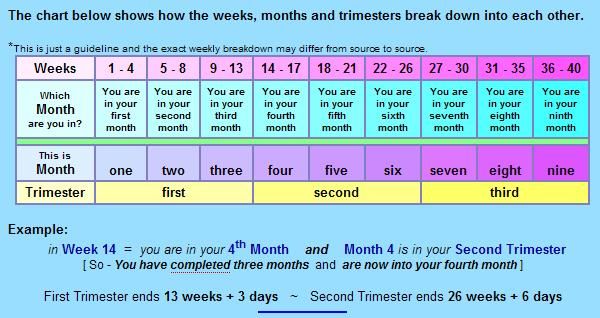 It includes ultrasound and a biochemical blood test for hormones. The terms when you can do the second study - from 20 to 24 weeks of pregnancy. At this time, it is necessary to take a blood test and undergo an ultrasound test on the same days in order to obtain reliable data.
It includes ultrasound and a biochemical blood test for hormones. The terms when you can do the second study - from 20 to 24 weeks of pregnancy. At this time, it is necessary to take a blood test and undergo an ultrasound test on the same days in order to obtain reliable data.
What is checked on ultrasound:
Also during the examination, the doctor examines the general analysis of urine for the presence of protein and inflammatory processes.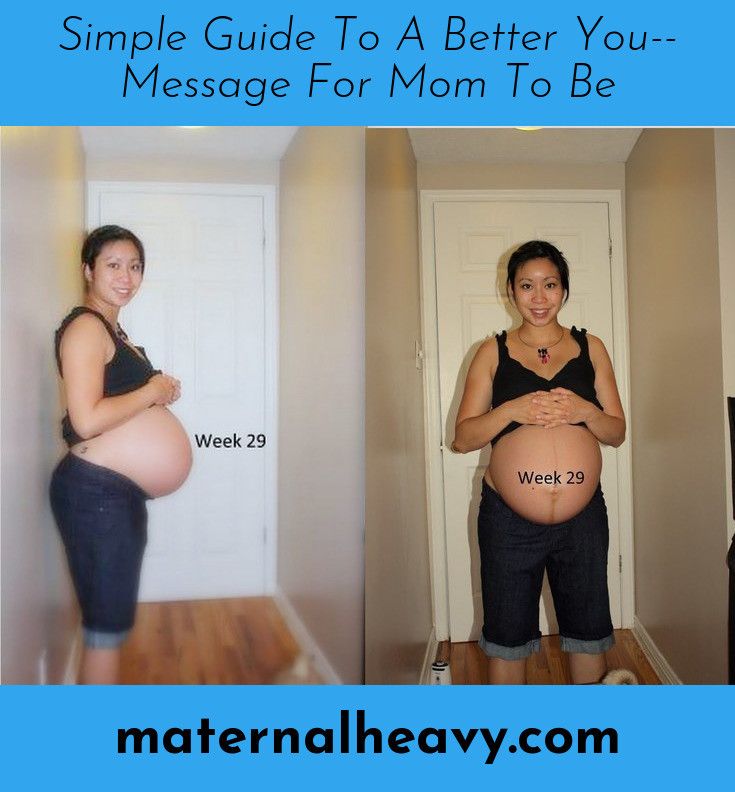 Measure the waist, listen to the stomach. nine0061 On ultrasound, the expectant mother can see the baby, print photos for memory. Screening a study with a blood test at this time is an optional procedure, but it is recommended to exclude possible genetic pathologies. The study is indicated for women over 35 years of age and those who already have children or relatives with genetic abnormalities in the family.
Measure the waist, listen to the stomach. nine0061 On ultrasound, the expectant mother can see the baby, print photos for memory. Screening a study with a blood test at this time is an optional procedure, but it is recommended to exclude possible genetic pathologies. The study is indicated for women over 35 years of age and those who already have children or relatives with genetic abnormalities in the family.
Recommended restrictions for expectant mothers
At the end of the second trimester, the fetal brain develops, so it is important for the expectant mother to adhere to the rules of a healthy diet, observe a rest and activity regimen, and do not forget about restrictions. nine0061 The main thing is to avoid toxic substances that can get to the fetus through the mother's body. It is forbidden to drink alcohol and take drugs that are contraindicated for pregnant women.
Do not smoke or lift weights, run or make sudden movements that can provoke bleeding, uterine tone and premature birth.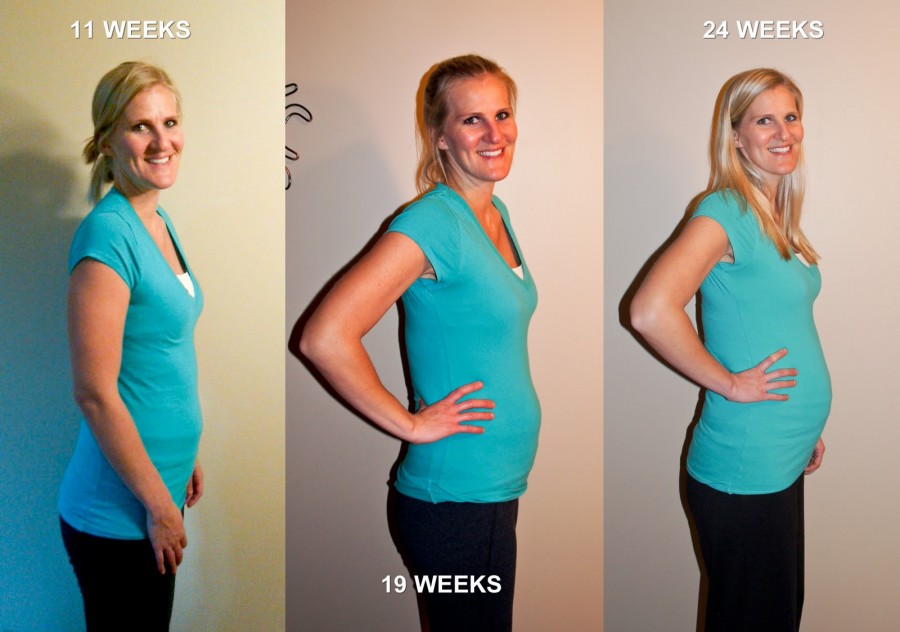 At this time, there is no longer a possibility of miscarriage, it is called premature birth.
At this time, there is no longer a possibility of miscarriage, it is called premature birth.
How to eat right in the 6th month of pregnancy
Throughout pregnancy, the main rule in nutrition is the balance of proteins, fats and carbohydrates in the absence of allergenic and unhealthy foods. You can follow a balanced diet on products from your usual diet. It is better to cook for a couple, boil, stew or bake. Limit or avoid fried, fatty, salty, spicy and smoked foods. nine0009
During the 6th month of pregnancy, it is important to include foods in your diet that help your baby's brain and bones develop. Products are needed that will help mom to establish the process of digestion and will be the prevention of constipation.
Useful substances at 6 months of pregnancy:
Eat often and in small portions. This will not only help control weight gain, but also prevent heartburn. With a growing belly, it is necessary to distribute food in portions so that there is no overeating or feeling of hunger. Choose warm liquid foods and drink plenty of water. If the doctor has diagnosed swelling, exclude salty foods from the diet, which retain water in the body. You need to drink no more than 1 - 1.5 liters of water per day. nine0009
Do not eat a lot before going to bed - there is a risk of heartburn and insomnia.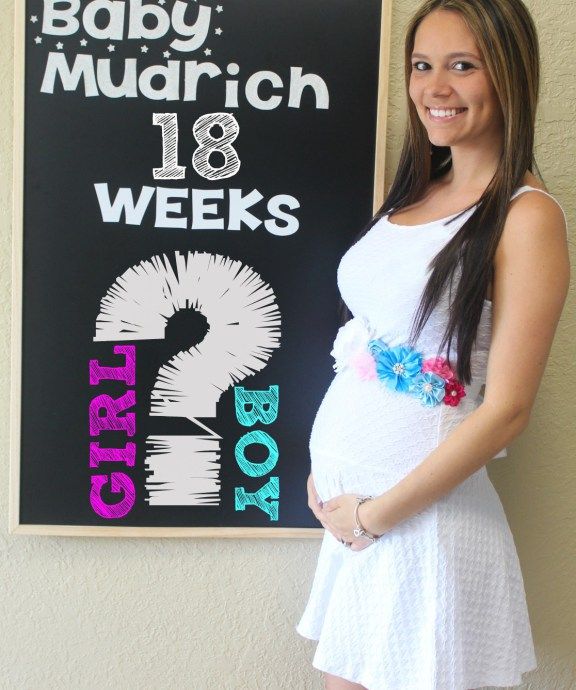 In the morning flatulence and constipation may begin.
In the morning flatulence and constipation may begin.
Do not get carried away with sweets. Empty calories quickly saturate and improve mood, but are deposited in extra pounds for mom and unborn baby. Replace the added sugar with fruits, nuts, marshmallows, marshmallows, or biscuits. They are less caloric, the composition is more natural.
Avoid foods with preservatives and flavor enhancers, carbonated drinks, raw fish. Eggs can only be eaten after heat treatment, hard-boiled or in ready-made dishes. Avoid dishes with raw eggs (homemade mayonnaise, desserts with whipped raw proteins). nine0068
What physical exercises are allowed at the 6th month of pregnancy
Restrictions in sports and excessive physical activity should not prevent the expectant mother from maintaining her muscles in shape, her skin in good shape, and her mood upbeat and cheerful. If a woman did not do strength training before pregnancy, you can’t start now. If you were engaged, you should significantly reduce the load, cancel exercises with power traction and sudden movements, exclude all exercises on the press. nine0009
nine0009
Permissible physical activity during pregnancy:
Walks in the park and race walking. In winter you can ski slowly. The double benefit of physical activity and outdoor walks. Look for a place where there are benches and a toilet within walking distance. Such activity is indicated for all pregnant women, even those who cannot do gymnastics or other sports.
Swimming. Go to the pool or swim in a clean pond, sign up for water aerobics. It relaxes and helps keep muscles toned. It is difficult to exceed the load, but control your sensations and the time of active exercises in the water. nine0009
Fitness. The best option is exercise with a fitball. Make smooth movements without stress on the stomach, to relax the back and strengthen the muscles of the pelvic floor.
Dancing. But movements without jumping and heavy load.
Warm-up.
Yoga with stretching and meditation postures.
Expectant mothers who were actively involved in sports before pregnancy can continue jogging until the end of 6 months. Such a load is allowed if it is allowed by the doctor after examination and analysis. nine0009
If you experience discomfort, nagging pain in the lower abdomen, lower back, a feeling of a “stone belly”, blood discharge, immediately call a doctor and take a horizontal position. If you do not calculate the load, you can harm the fetus and cause contractions.
Birth preparation courses
Many women attend maternity or childbirth courses during their first pregnancy. From 6 months, it's time to learn how to behave at the onset of labor, how to distinguish false contractions from true ones, when to go to the hospital. nine0061 If you are planning a partner birth, ask your dad to keep you company. He will find out how everything will happen, will be able to help in the process and will not be at a loss at the most crucial moment.
Courses for pregnant women provide detailed information about relaxation and breathing techniques during childbirth, during contractions, how to care for a newborn, which is considered normal, about breastfeeding and possible problems, about the diet of a nursing mother.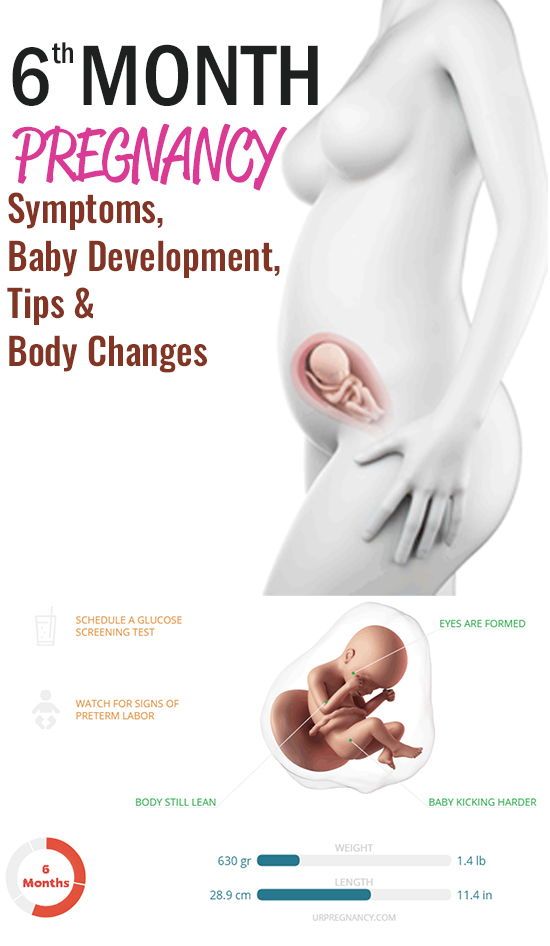 For those who are giving birth for the first time, this information is important to be prepared for any situation after childbirth. nine0009
For those who are giving birth for the first time, this information is important to be prepared for any situation after childbirth. nine0009
Possible complications and deviations
If there are warning signs with pain and bleeding, see a doctor or call an ambulance as soon as possible. But, except for extreme cases of complications, health problems may appear at this time, which also need to be treated on time. If you follow the doctor's recommendations and monitor your well-being, pregnancy will be easy. There are still 3 months left, and the baby will be born. starts on the first day of the last menstrual period and lasts 4 weeks. Fertilization occurs about two weeks after menstruation. Then a child is born. nine0061 At the end of the month, there are still 36 weeks left before delivery (8 months 12 days). REMEMBER! During pregnancy, you should not take any medication on your own initiative. back to index begins when 4 weeks have elapsed from the first day of the last menstruation. nine0009 Lasts 4 weeks. REMEMBER! Smoking and drinking alcohol during pregnancy can harm your baby. back to index begins when 8 weeks have elapsed from the first day of the last menstruation At the end of the month, 28 weeks (6 months 16 days) remain before delivery. REMEMBER! A good physical and mental condition of the mother contributes to the successful development of the fetus: a healthy diet and walks in the fresh air are useful for both. back to index begins when 12 weeks have elapsed from the first day of the last menstruation. REMEMBER! in order to receive maternity benefit, must appear at the antenatal clinic or doctor no later than during the fourth month of pregnancy. nine0009 back to index begins when 16 weeks have elapsed from the first day of the last menstruation. At the end of the month, 20 weeks (4 months 20 days) remain before delivery. REMEMBER! The time has come to arrange with the antenatal clinic nurse about family preparation. back to index At the end of the month, 16 weeks (3 months 22 days) remain before delivery. REMEMBER! At the 22nd week of pregnancy, you can already apply for maternity, paternity, parenthood and childbirth benefits. (See chapter Services and Benefits for Families with Children). back to index -begins when 24 weeks have elapsed from the first day of the last menstruation. At the end of the month, there are 12 weeks left before delivery (2 months 24 days). nine0061 At the beginning of the month the fetus is 22 weeks old, at the end of the month it is 26 weeks old. At the end of the month, 8 weeks are left before delivery (1 month 26 days). REMEMBER! during this period, you should not work for a long time standing on your feet, lifting heavy weights or doing other heavy work. back to index begins when 32 weeks have elapsed from the first day of the last menstruation. At the end of the month, there are 28 days or four weeks left before delivery. REMEMBER! Prepare now everything you need for the child. back to index - begins when 36 weeks have elapsed from the first day of the last menstruation, or 34 weeks from the start of fertilization. At the beginning of the month, the fetus is 34 weeks old and is usually born at 38 weeks. REMEMBER! If amniotic fluid begins to leak, pain or spotting occurs, or when contractions become regular, you should immediately go to the maternity hospital. (See the chapter on Birth.) Although pregnancy is a normal state, it tires the woman's body. All organs must adapt to the new state. The metabolism is accelerated, breathing and blood circulation are more efficient, the uterus is enlarged. During pregnancy, the placenta secretes many enzymes and hormones, which, along with the corpus luteum and the lower cerebral appendage, regulate the changes that occur in the body.
Varicose veins. There is an expansion of the veins of the lower extremities and small pelvis, this can be seen by the bluish veins and the appearance of red capillary nets on the skin. It provokes a complication of varicose veins sedentary lifestyle and weight gain when carrying a baby. At risk are women with multiple pregnancies or a history of varicose veins. To prevent or alleviate the disease, you need to wear compression stockings, lie with your legs up more often and go swimming. nine0061 Gestational diabetes. In pathology, the blood sugar level exceeds the norm for pregnant women.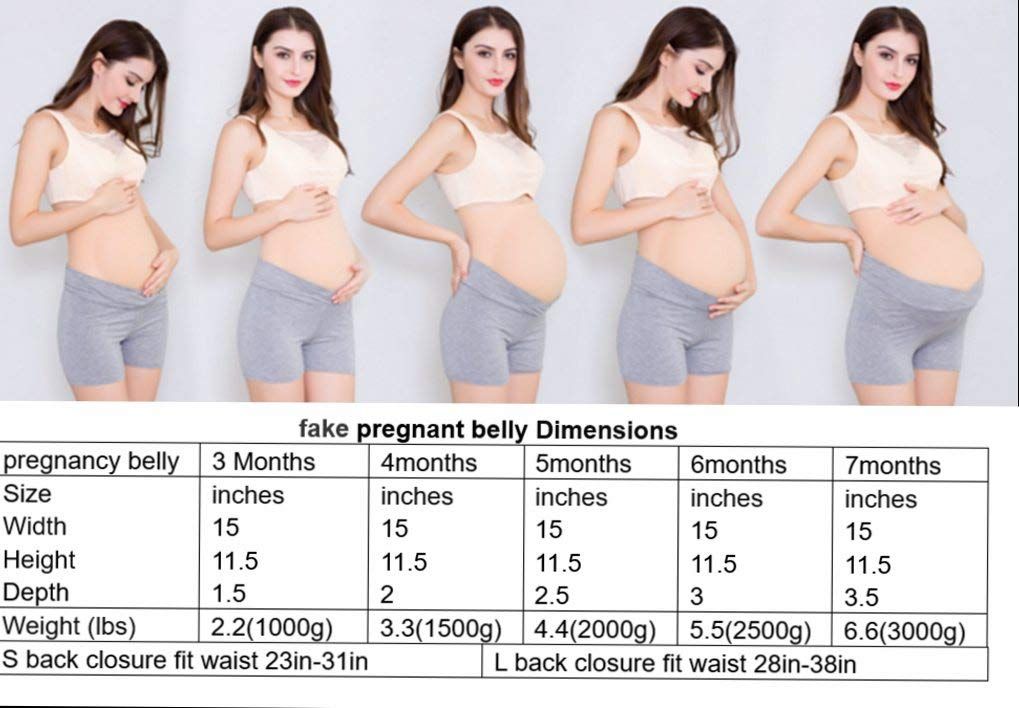 Signs are frequent urination, thirst, dizziness, and blurred vision. You can determine the violation by a blood test for sugar, a glucose tolerance test. A pregnant woman is prescribed a low-carbohydrate diet.
Signs are frequent urination, thirst, dizziness, and blurred vision. You can determine the violation by a blood test for sugar, a glucose tolerance test. A pregnant woman is prescribed a low-carbohydrate diet.
Anemia. Often occurs if hemoglobin falls. For correction, the doctor prescribes iron preparations suitable for pregnant women.
Premature birth. nine0006 In the 6th month, this is rare and can be caused by severe stress, a fall, or strenuous exercise. If you go to the hospital in time, the pregnancy can be saved.
Bleeding and risk of miscarriage. Could be for various reasons. One of them is a short cervix. For a period of 20 weeks, it should be at least 3 cm. To maintain pregnancy, an operation is performed to maintain the cervix using a pessary. Hormone therapy, bandage and bed rest are prescribed. nine0009 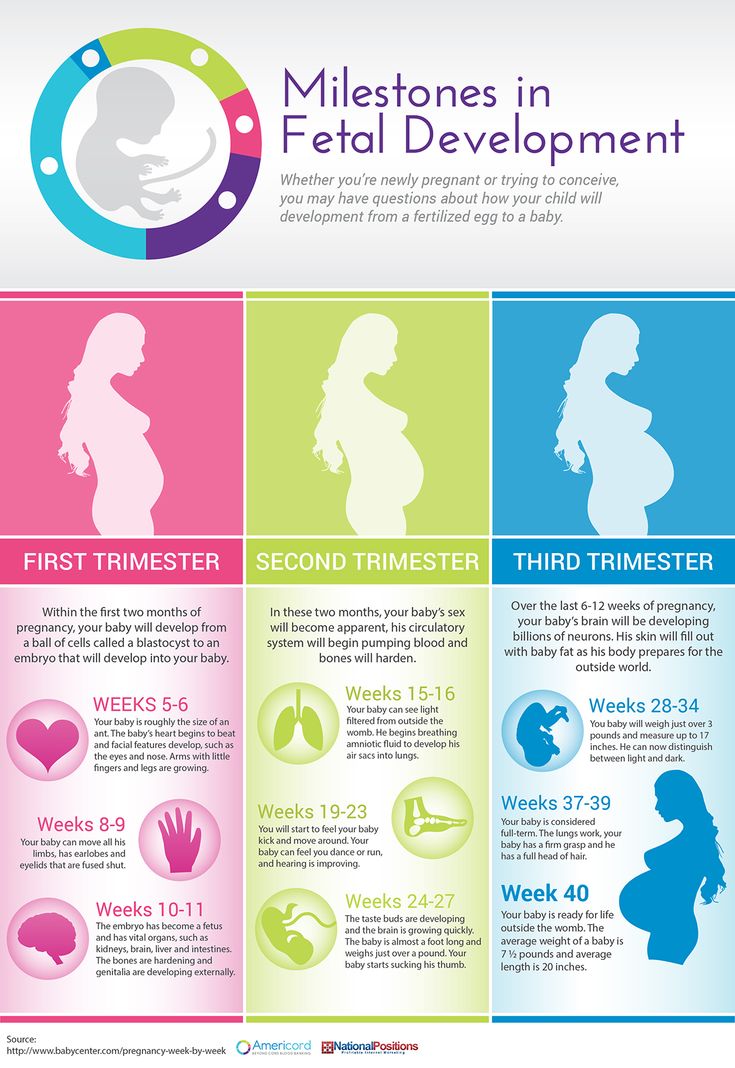
Months of pregnancy | Elite Clinic
First month of pregnancy (weeks 0-4) >
At the end of the month the fetus is two weeks old.
Pinhead sized fetus. 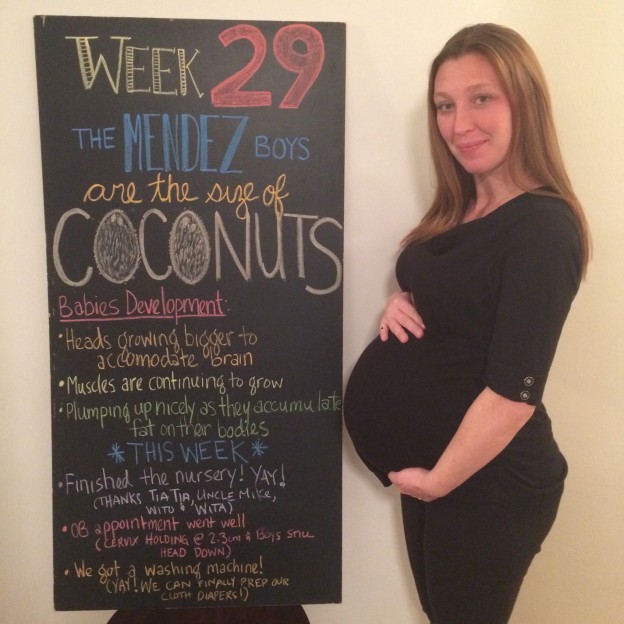 Check with your doctor or health center nurse for safety information.
Check with your doctor or health center nurse for safety information.
The second month of pregnancy (weeks 5-8)
At the end of the month, 32 weeks remain before delivery (7 months 14 days).
At the beginning of the month, the embryo is two weeks old, at the end - six weeks old.
At the end of the month, the embryo is about 1.5 cm long.
The embryo has small arms and leg rudiments.
The heart and nose begin to develop. ears and eyelids, nervous system, spine and umbilical cord.
The third month of pregnancy (weeks 9-12)
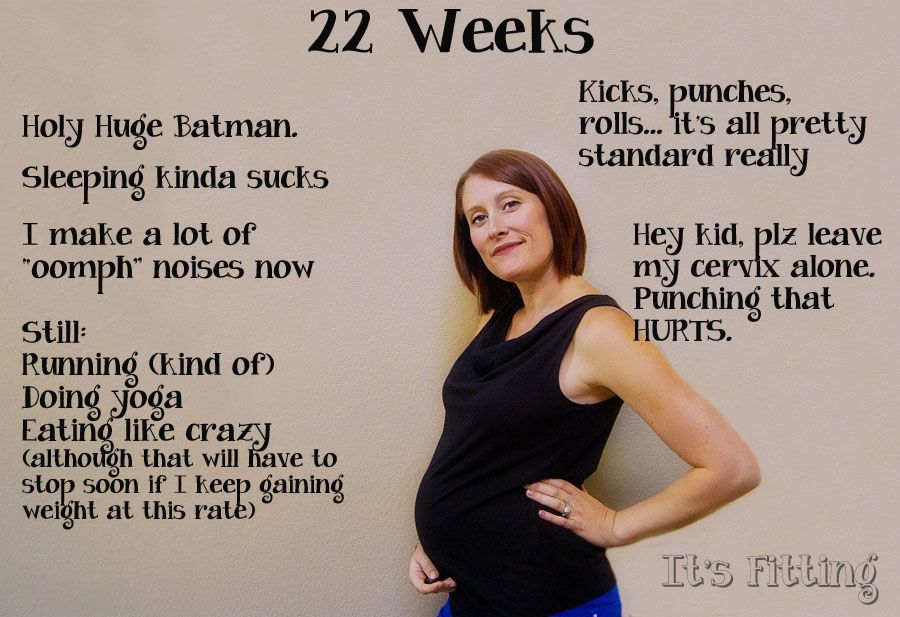
At the beginning of the month the fetus is 6 weeks old? at the end of 10 weeks.
At the end of the month, the length of the fruit is approx. 9 cm. The weight is approx. 20 g.
The heart starts beating for the first time.
The fetus floats in the amniotic fluid in the bladder and receives nutrients through the umbilical cord. nine0061 The fetus already has the upper and lower jaws and the rudiment of the tongue. The first rudiments of teeth appear.
The fourth month of pregnancy (weeks 13-16)
At the end of the month, 24 weeks remain before delivery (5 months 18 days)
At the beginning of the month the fetus is 10 weeks old, at the end of the month it is 14 weeks old.
At the end of the month, the fetus is about 16 cm long and weighs about 100 g. The uterus is about the size of a fist.
The head is large and makes up almost half of the total length. The face begins to take shape. Ears and genitals develop.
The fetus tries to breathe and swallow. He pushes with his legs, moves his toes and fingers, turns his head. The mother, however, does not yet feel these slight movements.
The fifth month of pregnancy (weeks 17-20)
At the beginning of the month the fetus is 14 weeks old, at the end of the month it is 18 weeks old.
At the end of the month, the length of the fetus is about 25-27 cm, its weight is about 250-300 g.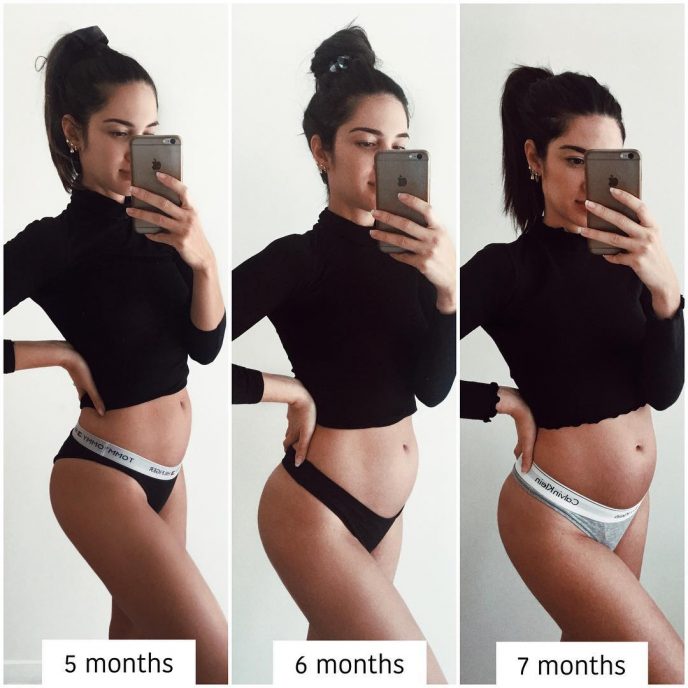
The fetus develops its own blood circulation and the heart beats twice as fast as that of an adult.
The skin of the fetus is covered with fluffy hair that disappears before delivery. Appear. in particular. brows. nine0061 The placenta at this stage is almost the size of the fetus, it protects the fetus from harmful substances. but can't filter everything.
By this time, the mother already feels the movements of the fetus in that case. if she gave birth before.
The sixth month of pregnancy (weeks 21-24)
begins when 20 weeks have elapsed from the first day of the last menstrual period.
At the beginning of the month the fetus is 18 weeks old, at the end of the month it is 22 weeks old.
The weight of the fetus is from 400 to 600 g, the length is about 30 cm.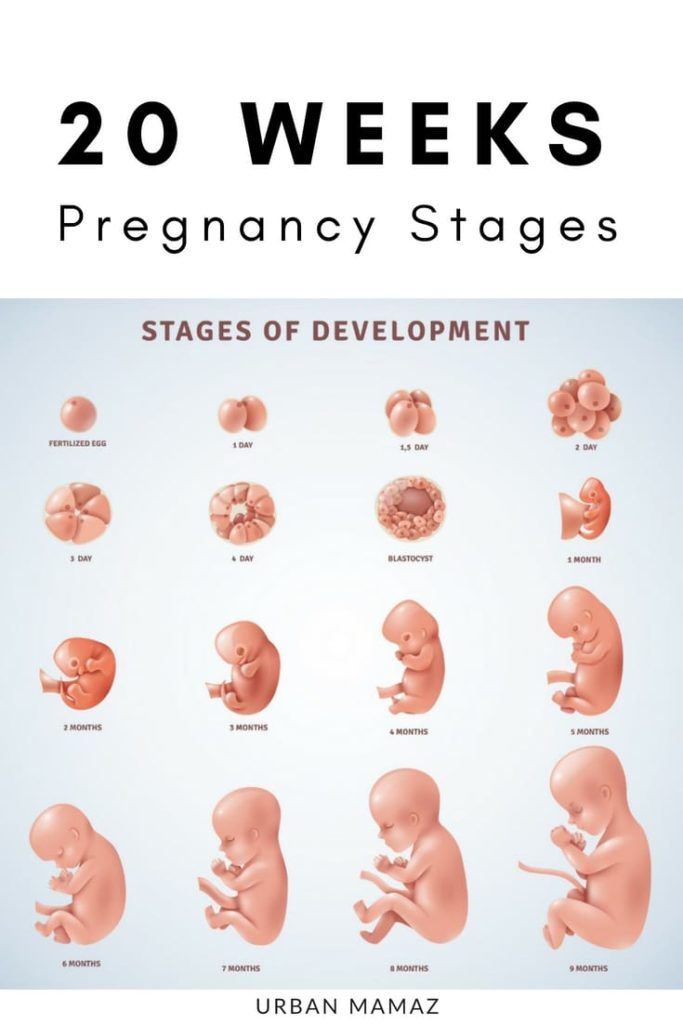 It moves so that even the primipara feels its movements. A heartbeat is heard.
It moves so that even the primipara feels its movements. A heartbeat is heard.
At the end of the month, the fundus of the uterus is at the level of the navel. Faster uterine growth is often a sign of twins.
The fetus tries to suck, the thumb often slips into the mouth. Hands, hair and nails grow. The protective shell begins to turn into skin. nine0061 The fetus sleeps most of the time, but may be awakened by voices or shaking from outside.
The seventh month of pregnancy (weeks 25-28)

The weight of the fetus is about one kilogram, its length is about 35 cm.
The fetus moves a lot, turns and pushes with its legs so that it can be seen even from the outside. He opens and closes his eyes, has a strong grip on his hands.
The uterus has risen to the level of the navel. The first contractions of the uterus may be felt in such a way that the abdomen "hardens" for a few seconds.
back to index
Eighth month of pregnancy (weeks 29-32)
begins when 28 weeks have passed since the first day of the last menstruation
At the beginning of the month the fetus is 26 weeks old, at the end of the month it is 30 weeks old.
The fruit is about 40 cm long and weighs about 1.5 kg.
In appearance, the fetus is similar to a newborn, however, it is more fragile, If it had been born, it could have remained alive.
However, the lungs and many other organs of the fetus are not yet fully developed.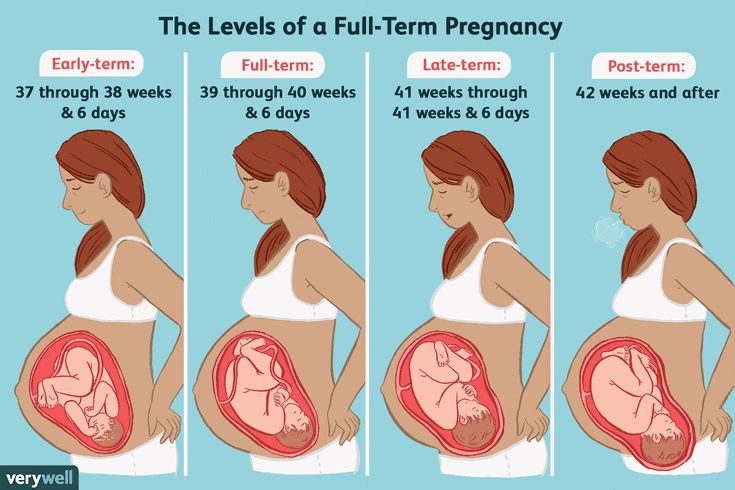 It does not have all the antibodies that a full-term fetus has. nine0009
It does not have all the antibodies that a full-term fetus has. nine0009
The ninth month of pregnancy (weeks 33-36)
At the beginning of the month the fetus is 30 weeks old, at the end of the month it is 34 weeks old.
The length of the fetus is about 47 cm, weight is about 2700 g. nine0061 The fetus moves less than before, as the uterus becomes cramped for him. Most fruits turn head down during this period.
A greasy layer forms on the surface of the skin, the so-called. original lubricant.
The uterus has risen to its maximum height, to the ribs.
The tenth month of pregnancy (weeks 37-40)
 nine0009
nine0009
The uterus is lowered and the fetal head is placed in the exit position. The cuts are greatly enhanced.
The fetus pushes so hard in the uterus that it can knock over a book placed on the mother's stomach.
Most newborns are 49 to 52 cm long and weigh 3,000 to 4,000 grams. Childbirth occurs at the end of the tenth month of pregnancy. However, the onset of labor a week earlier or a week later is a common occurrence. nine0009 
